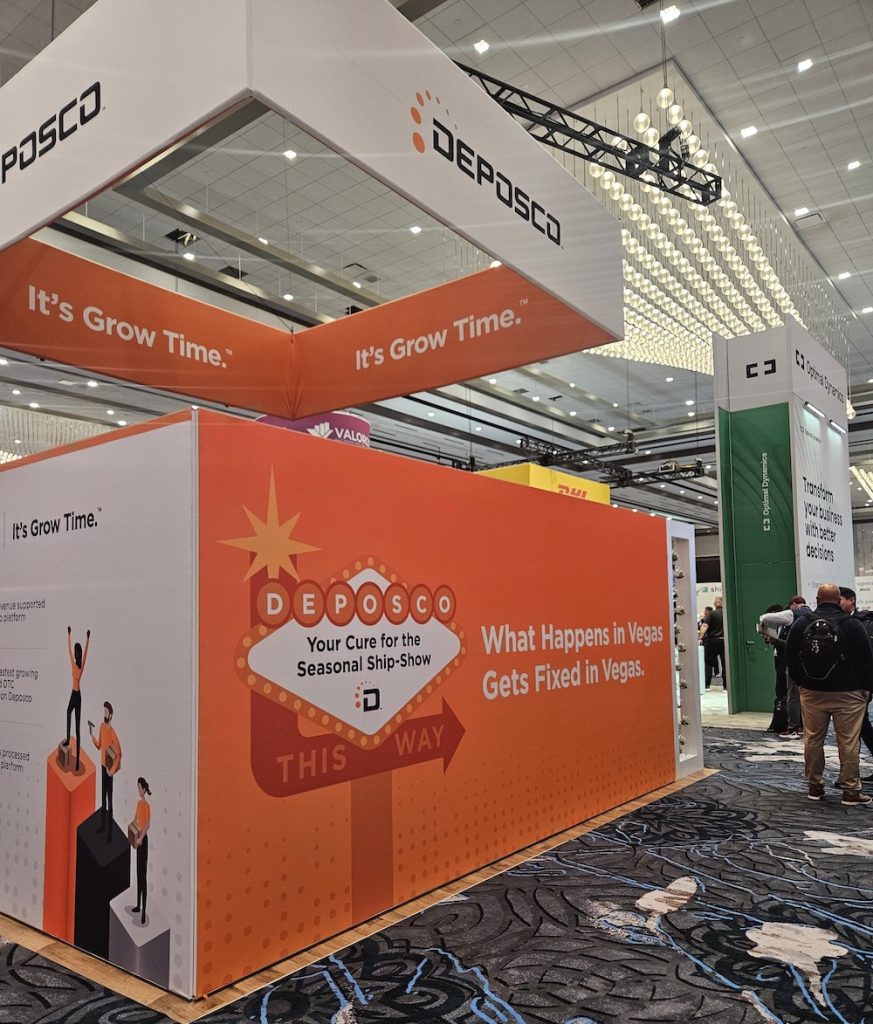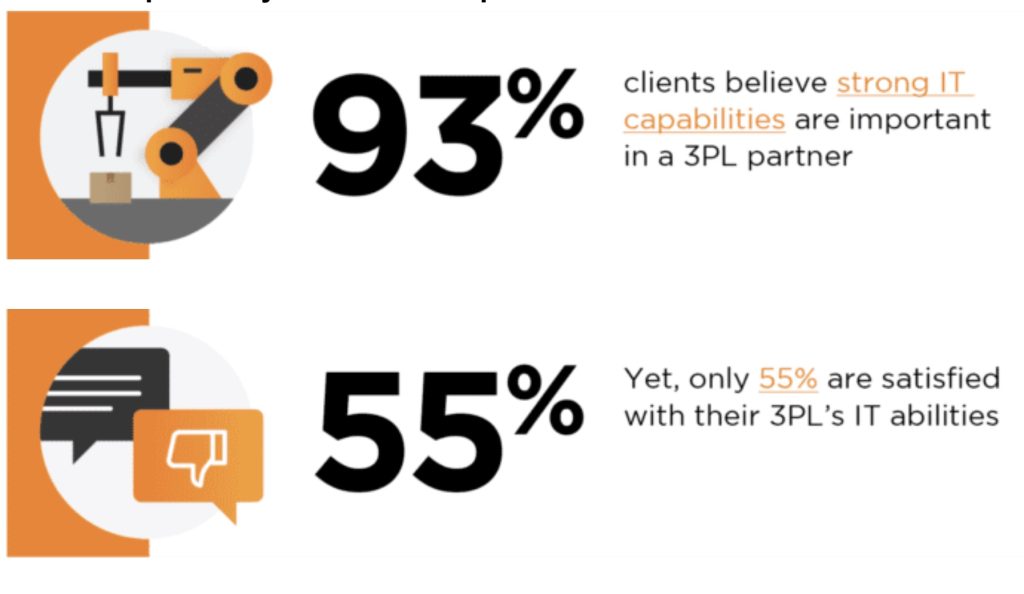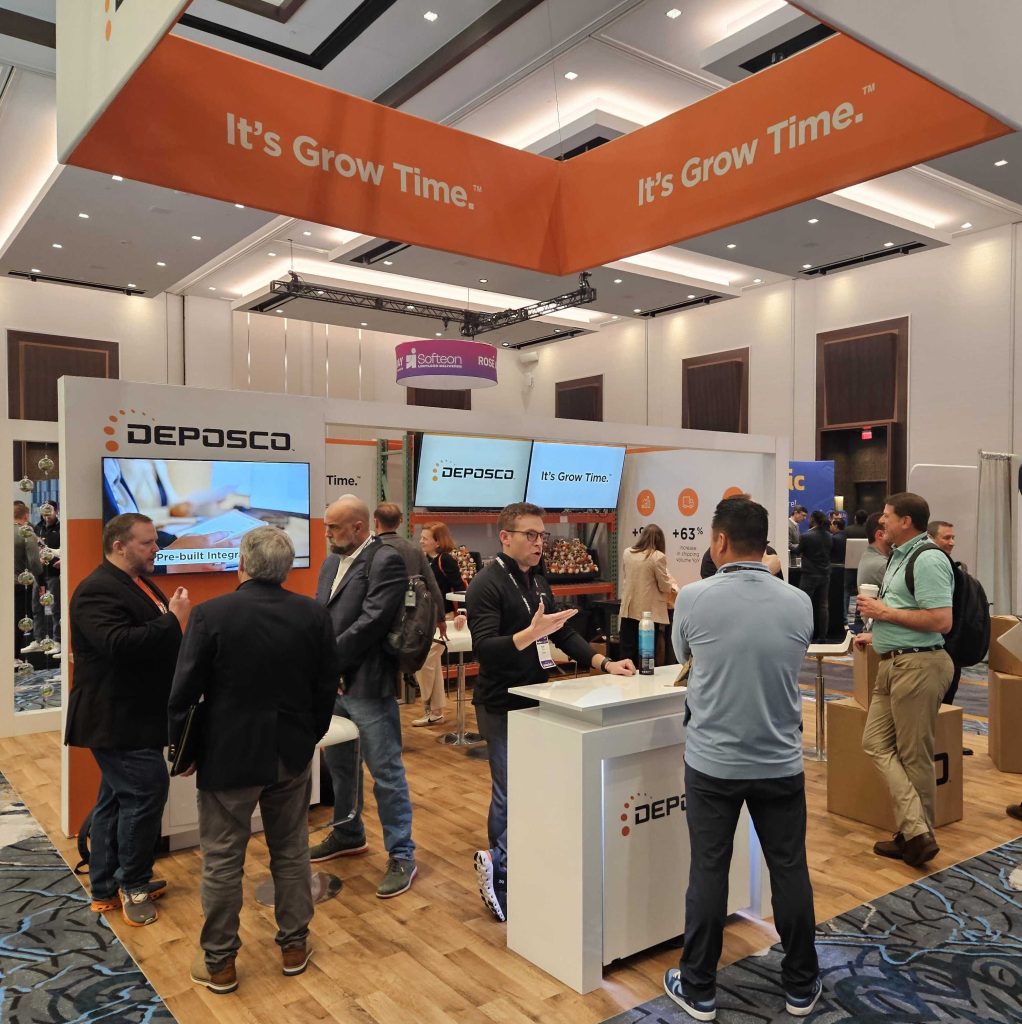If you missed Manifest, you missed a great time. Or maybe you didn’t miss it, but parts of it are just a bit “fuzzy”. Especially with the Super Bowl chaser a couple of days later. 😆Luckily, I took good notes.
We had some fun, yes. But it wasn’t all games. More importantly, our booth theme came to life in all our conversations: “What Happens in Vegas Gets FIXED in Vegas.” 
Hundreds of conversations led to one consistent conclusion: 3PLs and Shippers deal with a daily “ship-show”.
Eight key takeaways bubbled up to the top across businesses like yours seeking to optimize their fulfillment and shipping operations:
#1: Data – It’s not just what you have, it’s what you do with it
Data visibility was a topic of every discussion this week. Every solution provider is talking about the data their solution provides. But, data alone isn’t enough.
Companies are looking for fulfillment software that provides actionable insights and empowers better decision-making across the business. They’re evaluating warehouse management systems (WMS) that elevate the game with unprecedented advancements in:
- Real-time inventory visibility (no lag)
- Order accuracy with automated process control
- Streamlined workflows: optimize labor, warehouse space, and inventory turnover
- Billing efficiency and accuracy
- Scalability: add warehouses or fulfillment centers without a big IT project
- Customer service: fulfill orders on time and provide order status updates, which can be conveyed easily to customers
- Advanced reporting: improve decisions and processes within your own organization – AND become a technology resource to your customers
#2: Let the technology sell your 3PL
3PL providers and Shippers continue to be a strong presence at Manifest. Many were looking to enhance their offerings. Not only do they want technology to improve their service, but they are looking for tools that help retain customers and attract new business.
A few 3PLs told me that part of their selection process when evaluating new solutions is to put them in front of their customers. They are only looking for solutions that differentiate their service.
What many fail to account for in the evaluation process, however, is how much weight customers place on your technical capabilities:
Does your current fulfillment technology enable business differentiation? Or just deterioration?
Related: The Case for 3PL Systems: Why and How
#3: Customer experience is king
ROI is no longer only measured in efficiency gains and cost-cutting. Companies are placing more value on the customer experience and emphasizing technology that enhances that experience.
Many Manifest conversations highlighted how technology is a differentiator for their customers. Increased, real-time visibility and insights that enhance the customer experience were key value drivers, more so than in years past.
Other desirable services included:
- High-volume order processing
- Diverse shipping options
- Real-time, accurate order tracking
- Distributed Order Management (DOM) for expansion
- Personalization such as final product assembly, kitting, and packaging
- Easy returns management
- Custom reporting & support for green initiatives
#4: Integrations are key
The legacy approach of having one product suite to do it all is no longer the goal.
Nearly every company we talked with brought up the importance of “playing well with others” and having the flexibility to work with the other technologies that might already be in place.
“Open integrations” and “API flexibility” were talked about often as a means for achieving continuous innovation and competitive advantage.
Are integrations your next big break?
#5: Labor is core to efficiency
While not every solution vendor is calling it out, the ability to source and retain labor is a core theme to many of the presentations we saw at Manifest.
We’re continuing to see a marked shift in adoption. Technology is no longer a nice-to-have that shows your 3PL is maturing. Now, that technology is “must-acquire”, or you won’t be able to meet your commitments. Automation was a big part of that, as were data analytics designed to enhance productivity.
While there is a key focus on KPIs driven by technology, much of the focus is on worker experience and job satisfaction. Modern 3PLs and Shippers that focus on serving customers in a clean, efficient manner also tend to have higher levels of worker satisfaction and less turnover. It’s easier to like and stay in a job when the job invests in modern tools.
The net result is reduced recruiting, training, and ramp overhead – plus better outcomes for service providers, Shippers, and customers alike.
#6: Automation and integrations help defend margins
Every year, more automation solutions are hitting the market and becoming more accessible. It’s not just enterprise-size organizations looking seriously at automating; small companies are too.
The nuance is in motivations. Enterprise firms are seeking increasing ROI from their investments. Small businesses are looking for any advantage to protect their niche in the market and are being compared to the incumbents.
There’s much variety and innovation in the automation space. Something for everyone. One thing everyone agreed on is that a flexible, configurable WMS delivers the most seamless experience when implementing your ideal mix of software and hardware solutions…
That could be pick-to / put-to-light systems, sortation equipment, autonomous mobile robots (AMRs), automated storage and retrieval systems (ASRS), automated packaging systems, or something not even yet invented!
[demo_form title=”See Deposco in Action” lead=”Find out how we’ve helped 3PLs grow revenues and retain clients with confidence.”]These solutions enable 3PLs and Shippers to diversify their offerings and acquire technology to retain or entice new business while addressing another strong theme: cost control in defense of margins.
Many cited that the slim margins on the contracting side have shifted the conversation to controlling expenses and being able to attribute costs to their tenants accurately.
#7: Three-letter solution acronyms are confusing people
There is no one-size-fits-all – and no minimal viable product (MVP) definitions – in core terms like WMS and OMS anymore.
As Deposco is increasingly compared to other solutions in our market band, we’ve needed to coach prospects more and more: have they correctly identified their needs? Does the solution they are acquiring match the business they are… Or the one they’ll be soon?
It’s common in our space to purchase a solution that sounded good. Or came highly recommended, only to find that it didn’t do the things your business relies on or sells through.
You don’t need a solution that’s an 80% fit. You need one that does what you need, with a strong roadmap to the future. Present value fit and a proven record of innovation through reinvestment must be part of your WMS RFP process.
Go beyond the car brochure, or you could find a mismatch between the supply chain management system you bought and the one you needed.
#8: The Reverse Economy is hot
Manifest turned up a disproportionate display of returns management solutions. Like my previous point, the 3-letter acronyms aren’t descriptive of the offerings anymore.
Some are focused on ecommerce, some are focused on apparel rework, and some have a focus on cross-border. The important thing is to map from your needs – or your customers’ expectations – to the offering you are considering. You don’t want to underbuy anymore than you want to overbuy. Aligning your needs, today or near-future, is critical.
As ecommerce and Direct-to-Consumer (DTC) continue to grow, the handling of products out in the field has blown up. It’s important to have an experienced technology partner who can help you decipher the right solution components for your unique needs.
